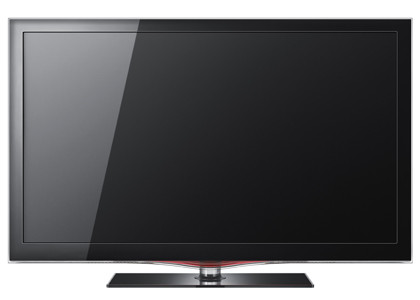Why you can trust TechRadar

Out-of-the-box the LE40C650's 'movie' mode produces impressive results, but there's an exhaustive settings menu to investigate if you want colours spot-on. Selecting a parameter to change brings up an adjustment bar across the bottom of the screen. That's useful if you want to manually adjust colours, say, but not if you want to quickly change something and move on.
It might be time-consuming, but it's worth it, although the main picture-boosting technology on the LE40C650 is MotionPlus 100Hz. This frame rate-doubling tech should rid the LCD panel of its traditional blur when showing fast-moving motion. It does just that – images from a Blu-ray disc of Hancock are sharp and fresh with Motion Plus activated and fast-moving scenes don't suffer from much resolution loss.
A slow pan across a valley to Hancock lazing outside his hut shows no sign of blur or motion judder, with detail high and colours brilliant.
But a close-up of Hancock's hands reveals two of this TV's weaknesses: flicker and contrast. His hands are lit while the surroundings are dark, and the result is a black hole. As he moves his hands up his face, there's also a distinct flicker that's quite distracting.
So while the MotionPlus system does reduce blur its effect shouldn't be overstated – you'll only notice it during fast-moving scenes, and simultaneously you'll more often notice the blur replaced by flicker. Consequently, MotionPlus is best left on its mid-strength 'smooth' setting. This minimises the flicker, while retaining most of the fluidity – which in itself creates a very involving picture that, at first glance, looks stunning.
MotionPlus rids the panel of all but minor amounts of blur, while jagged edges are smooth and well rendered.
Contrast on the LE40C650 is just about acceptable, though there's not as much detail within dark areas of the image as we'd hoped for. There's no doubt that the panel is capable of producing deep blacks on its own, and in practice its 'black tone' setting (dark, darker, and darkest are available) only creates more of a 'black hole' feel.
It's also worth noting the LE40C650's 'Eco Solution' settings. This energy saving feature can be switched off, but in use can be set to low, medium and high, which obviously reduces the brightness of the panel. There's also an option to switch-off the panel altogether, which is useful while you're listening to DAB radio through the set's Freeview tuner.
Digital TV is not as sharp as it could be, but it is very clean, while both Freeview and DVD images are upscaled in a low impact manner. The results aren't exactly awe-inspiring, but it's done cleanly and without any artefacts creeping in.
Our one complaint about an otherwise endlessly tweakable approach to picture settings (professional calibrators will love the LE40C650's unusual 10p white balance feature) is that none of them feature on the remote control. MotionPlus, in particular, could do with a dedicated command on the backlit remote control, so 100Hz scanning could be toggled on and off.
Current page: Samsung LE40C650: Picture
Prev Page Samsung LE40C650: Ease of use Next Page Samsung LE40C650: Sound and valueJamie is a freelance tech, travel and space journalist based in the UK. He’s been writing regularly for Techradar since it was launched in 2008 and also writes regularly for Forbes, The Telegraph, the South China Morning Post, Sky & Telescope and the Sky At Night magazine as well as other Future titles T3, Digital Camera World, All About Space and Space.com. He also edits two of his own websites, TravGear.com and WhenIsTheNextEclipse.com that reflect his obsession with travel gear and solar eclipse travel. He is the author of A Stargazing Program For Beginners (Springer, 2015),

